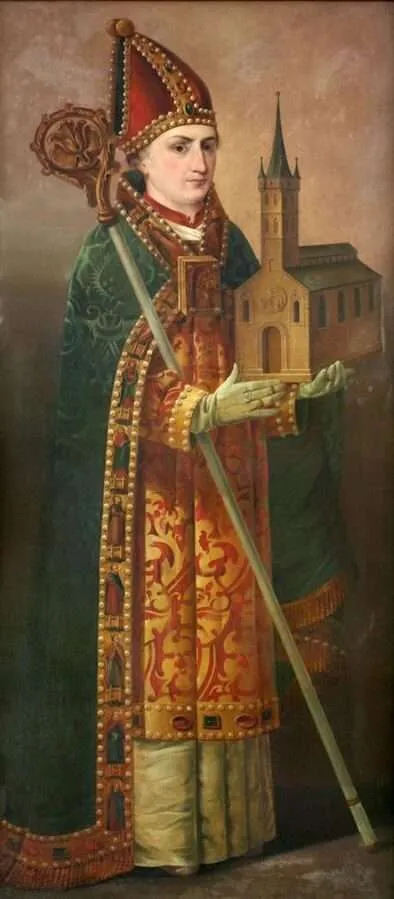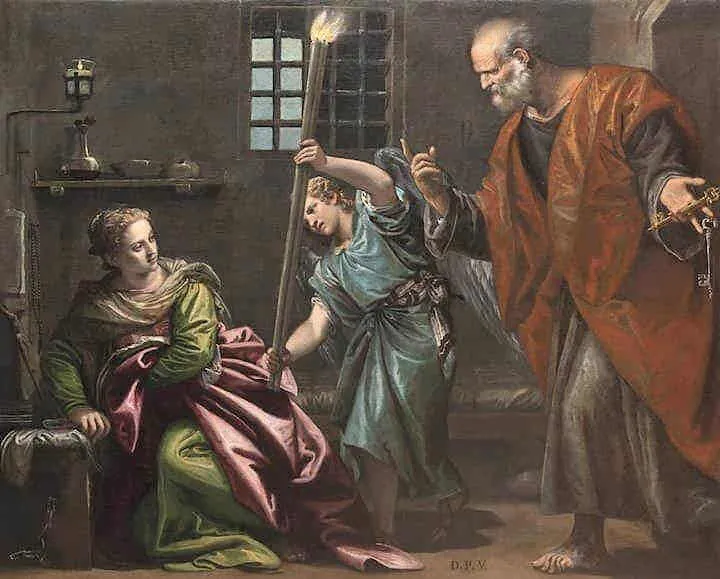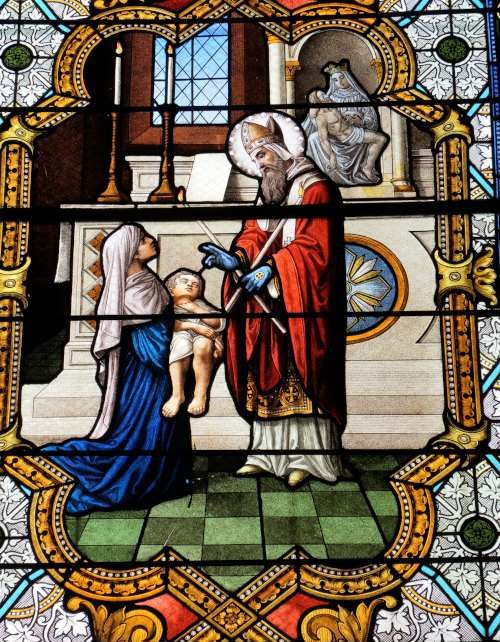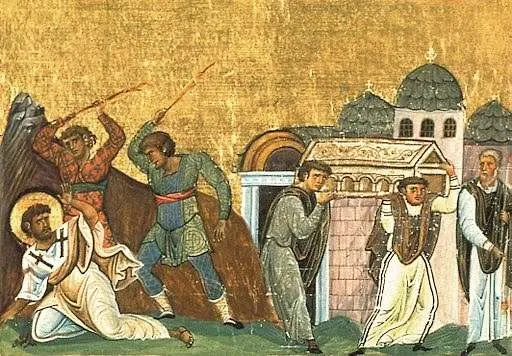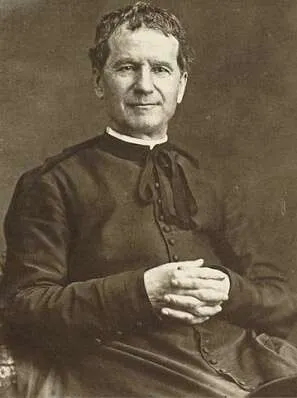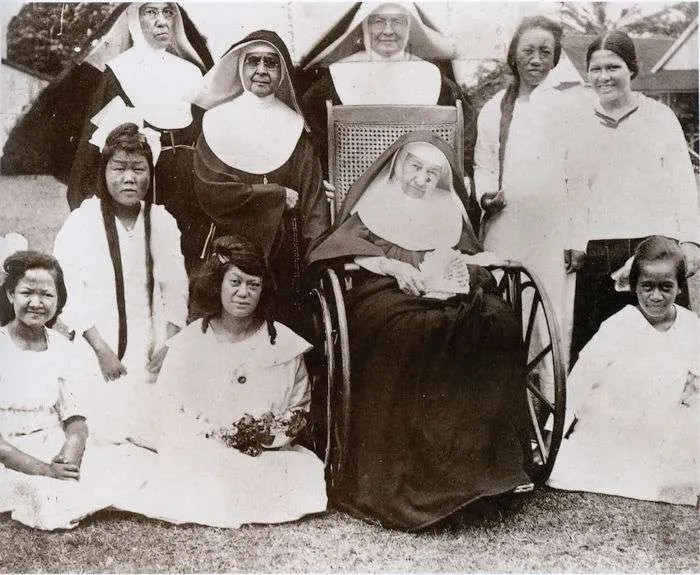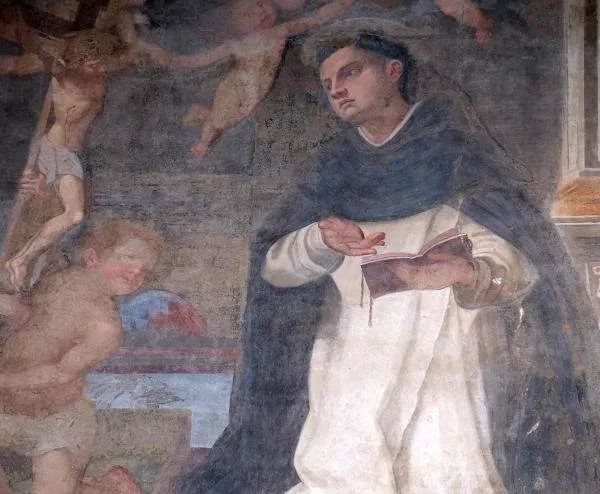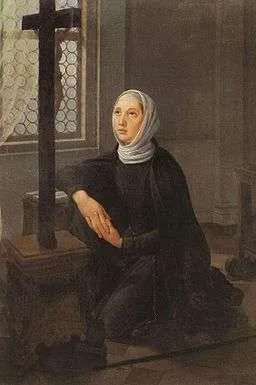Saint Ansgar, Bishop
801–865; Patron Saint of Scandinavia, Denmark, Sweden, and various locations in Germany; Declared a saint by Pope Nicolas I c. 865
Saint Rimbert succeeded today’s saint, Saint Ansgar, as the Archbishop of Hamburg-Bremen, Germany. Saint Rimbert was about thirty years younger than Saint Ansgar and most likely met Ansgar when Rimbert was a young monk. Eventually, Rimbert became a constant companion of Ansgar, knowing many intimate details of his life. After Ansgar’s death, Rimbert wrote a detailed biography about him, blessing us with that same intimate knowledge about today’s saint.
Ansgar was born into a noble Germanic family in the town of Amiens, modern-day France. When he was only about five years old, his mother died and his father sent him to live at the Benedictine Monastery of Corbie where he received his early education. In his early years at the monastery, Ansgar acted in childish ways, always joking around with the other boys. He didn’t take his faith or studies very seriously. However, one night he had the first of many visions that would set the course of his future. He saw the Blessed Mother coming to him with many other women behind her. Among the others was his own mother. The Blessed Mother asked him if he wanted to come to his mother and be with her, to which he responded that he did. At that, the Blessed Mother said to him, “If you desire to share our companionship, you must flee from every kind of vanity, and put away childish jests and have regard to the seriousness of life; for we hate everything that is vain and unprofitable, nor can anyone be with us who has delight in such things.” This was the beginning of a new journey of faith for Ansgar.
When Ansgar became a teenager, he began to slip in his devotion. He then had another vision that caused him to be both “terrified and comforted.” He experienced death, followed by what seemed to be 1,000 painful years in Purgatory, and then, once purified, entered into the celestial glories of Heaven. In Heaven he saw the angels and saints and, in the center, the Son of God Whom he adored. Jesus spoke to him in the most distinct voice that filled the whole world saying, “Go and return to Me crowned with martyrdom.”
In 822, at the age of twenty-one, Ansgar, professed as a monk, was sent to modern-day Germany as a missionary to help found the Abbey of Corvey and, from there, continued to move north into the pagan territory of modern-day Denmark. In 829, after returning to Germany for a couple of years, Ansgar was sent even farther north into Sweden to preach and win over converts to the faith. Two years later, in 831, Ansgar was named Archbishop of Hamburg-Bremen, a new diocese in northern Germany tasked with sending missionaries into what is modern-day Denmark, Norway, and Sweden.
For the next thirty-five years, Bishop Ansgar worked tirelessly to stabilize his own diocese and to evangelize the pagans in the north. He built churches, hospitals, schools, and monasteries and endured wars, invasions, and the confiscation and destruction of his churches. He worked with other bishops, befriended kings, was threatened by the pagans and Vikings, but pressed on with his work. He devotedly reached out to the poor, lived a holy life according to his monastic rule, mortified his flesh, and regularly fasted on bread and water. Because he longed for the crown of martyrdom, he offered himself sacrificially to God and to unwavering evangelization.
In the thirty-fourth year of his episcopacy, at the age of 64, Bishop Ansgar endured months of intense suffering from an intestinal infection. Throughout that illness, he often quoted Job who said, “We accept good things from God; should we not accept evil?” (Job 2:10). Before his death, he made arrangements for the proper administration of his diocese and missions. When all was prepared and he was on his deathbed, he prayed until his last breath, quoting various Scriptures, including, “O God, be merciful to me a sinner” (Luke 18:13), and “Father, into your hands I commend my spirit” (Luke 23:46).
Saint Ansgar did not become a martyr in blood, but he did lay his life down for others, carrying the heavy crosses of mortification, selfless evangelization, tireless administration, courageous travels, and fidelity to his monastic calling. He returned to his Lord as a true martyr who gave his life for his sheep. As we ponder Saint Ansgar, reflect upon the ways that you are called to live a sacrificial life in wholehearted service of our Lord. What attachments do you need to let go of? What sufferings do you need to willingly embrace? What cross do you need to pick up and carry? Imitate this great saint by losing yourself for Christ, for that is the only way to find that which is eternally more.
Source: https://mycatholic.life/saints/saints-of-the-liturgical-year/february-3-saint-ansgar-bishop/
Saint Ansgar, Bishop Read More »

